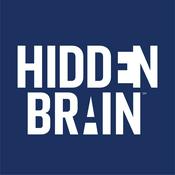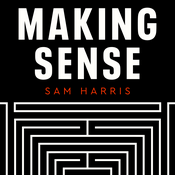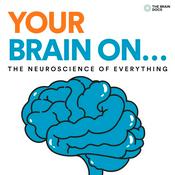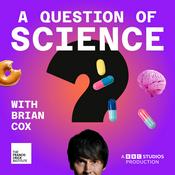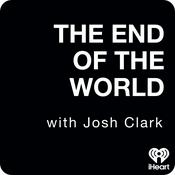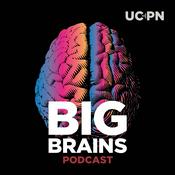32 episodes

Submersion, Event! and End of the Pod (for now)
10/15/2025 | 15 mins.
Coming Soon: Invictus.ReviewsYouTube VersionWe reframe “drowning” as submersion incidents and lay out a simple path from shore to safe disposition. Hypoxia drives arrest, observation prevents misses, and ECMO has a clear role when ventilation fails or hypothermia persists.• replacing drowning with submersion incidents• hypoxia as the primary cause of arrest• selective C‑spine precautions based on mechanism• ECMO for refractory hypoxemia or hypothermia• normal chest X‑ray can mislead after aspiration• strict four to six hour observation window• discharge only if fully asymptomatic with normal vitals and exam• admit for any symptoms, abnormal gases, dysrhythmia, or abnormal imaging• use NIV for symptomatic, alert patients; intubate if needed• avoid steroids and routine antibiotics; exception for sewage exposure• active rewarming as a core treatment step• board strategy: read stems literally and match management to symptomsOur oral board review course is going to be out soon, like really soon. The written board review will be delayed until early next year; we’ll restart a new and better podcast with more people in the Invictus part of things—stay tuned.

Antidepressants Toxicity
9/02/2025 | 19 mins.
YouTube LinkDr. Sean Nordt delivers a comprehensive pharmacology lecture on antidepressants, their mechanisms, and the management of toxicity cases in emergency settings. The board-certified emergency physician, pharmacologist, and toxicologist walks through the complex pharmacology of psychiatric medications, focusing on their potentially deadly complications and how to recognize and treat them.• Cyclic antidepressants cause toxicity through fast sodium channel blockade, leading to QRS widening and ventricular dysrhythmias• Sodium bicarbonate is the cornerstone treatment for cyclic antidepressant toxicity, working by increasing pH and altering cardiac binding• SSRIs and SNRIs have distinct adverse effect profiles, with SNRIs posing greater risk in overdose scenarios• Bupropion overdose commonly causes seizures and QRS widening through cardiac gap junction blockade• MAOIs can cause hypertensive crisis and severe serotonin syndrome, especially with tyramine-rich foods or drug interactions• Serotonin syndrome is characterized by hyperreflexia and clonus, distinguishing it from neuroleptic malignant syndrome• Treatment approaches differ for serotonin toxicity (benzodiazepines, cooling), NMS (supportive care), and malignant hyperthermia (dantrolene)• Antiemetics like metoclopramide and promethazine can cause extrapyramidal effects treatable with anticholinergics

Household Poison Pearls
8/19/2025 | 3 mins.
YouTube LinkUpdates on the Invictus medical review courses with "baby Invictus" for oral exams coming soon and a comprehensive border review course in development. Dr. Sean Nort shares vital insights on common household ingestions, challenging assumptions about what substances actually pose dangers to children.• Household bleach (3% sodium hypochlorite) ingestion typically requires only reassurance and discharge home• Industrial bleach is more concerning due to higher concentration• Most cosmetics, window cleaners, soaps and detergents have minimal toxicity• Laundry pods can cause more significant caustic burns and sometimes reduced consciousness• Silica gel packets are extremely safe despite "do not eat" warnings• Poison control centers are the best resource for managing potential ingestionsVisit invictusreviews.com to learn about our expanding medical education resources and upcoming course offerings.

Necrotizing Infections For Exams
7/30/2025 | 6 mins.
YouTube LinkDr. Mel Herbert provides a crucial update on the Invictus Board Review program alongside critical pearls for identifying and managing deadly necrotizing infections. These rapidly progressing infections require immediate recognition, prompt treatment, and surgical intervention to prevent death from these tissue-destroying processes.• Necrotizing infections include necrotizing fasciitis, Fournier's gangrene, Ludwig's angina, and malignant otitis externa• Key warning signs include pain out of proportion to physical findings, rapidly progressive spread, dishwater discharge, and woody edema• "La belle indifference" describes patients who appear strangely calm despite severe infection• Polymicrobial infections often start as normal infections before turning necrotizing days later• Monomicrobial forms (often Strep A) progress extremely rapidly in otherwise healthy individuals• Seawater exposures can introduce deadly Clostridium or Vibrio species through minor skin breaks• Treatment priorities: rapid diagnosis, fluid resuscitation, antimicrobials, and immediate surgical debridementThe full Invictus Board Review program and OSCE preparation materials will be available soon to address declining emergency medicine board exam pass rates and provide continuous education for practicing clinicians.

Trach Emergencies
7/14/2025 | 17 mins.
YouTube LinkTracheostomy and laryngectomy emergencies demand specific knowledge and immediate action to prevent devastating complications. Jess Mason delivers critical pearls on managing occluded, dislodged, and bleeding tracheostomies that are essential for both board exams and clinical practice.• Cuffed tracheostomies have a pilot balloon and are required for positive pressure ventilation• Uncuffed tracheostomies are more common in established patients but cannot be used with ventilators• Occluded tracheostomies should be managed with oxygen first, followed by suctioning and inner cannula cleaning• Dislodged tracheostomies require immediate replacement to prevent stomal narrowing• Bleeding tracheostomies may signal a tracheo-innominate artery fistula, especially with "sentinel bleeds"• Laryngectomies fundamentally differ from tracheostomies in that they have no communication between mouth/nose and lungs• You can ONLY manage a laryngectomy patient's airway through their stomaVisit us at Invictus for comprehensive board review resources that deliver continuous education through videos, audio, written summaries, question banks, and live events designed to help you maintain mastery of emergency medicine throughout your career.
More Science podcasts
Trending Science podcasts
About Invictus Reviews
Listen to Invictus Reviews, Something You Should Know and many other podcasts from around the world with the radio.net app
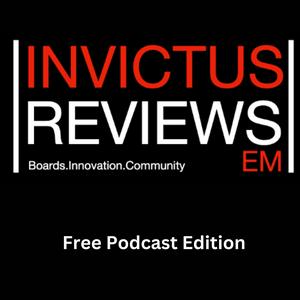
Get the free radio.net app
- Stations and podcasts to bookmark
- Stream via Wi-Fi or Bluetooth
- Supports Carplay & Android Auto
- Many other app features
Get the free radio.net app
- Stations and podcasts to bookmark
- Stream via Wi-Fi or Bluetooth
- Supports Carplay & Android Auto
- Many other app features


Invictus Reviews
download the app,
start listening.

